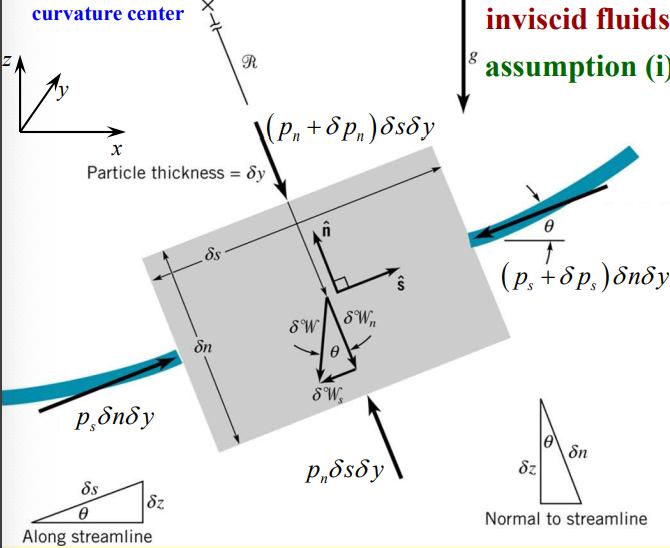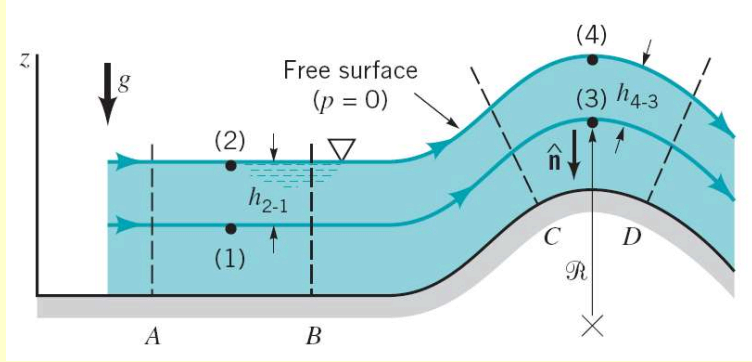Let us consider the same element in - elements as we did in N2L Along Streamline.

In the -direction, applying gives us
Where we have and . This gives us
where is the centripetal acceleration.
Since we are normal to a streamline, by definition, there is no dependence of on because only changes along :
This then lets us write the above equation as
which gives us
Integrating both sides gives us:
For incompressible with , we have
Example
Find the pressure variation between points (1) and (2); (3) and (4). Assume inviscid, steady flow.

Since we are working across streamlines, we can’t use Bernoulli’s equation and instead use
(1) to (2)
From (1) to (2), we are going across two parallel streamlines, so the radius of curvature . Then, we just have
So we simply have a static pressure equation (no shearing stress, no acceleration):
or
(3) to (4)
From (3) to (4), we integrate to get:
Since the integral term is negative, we know that . This means that the pressure at (3) is lower than what we would expect from a simple hydrostatic force balance, because part of the pressure is used to provide the force required for centripetal acceleration.